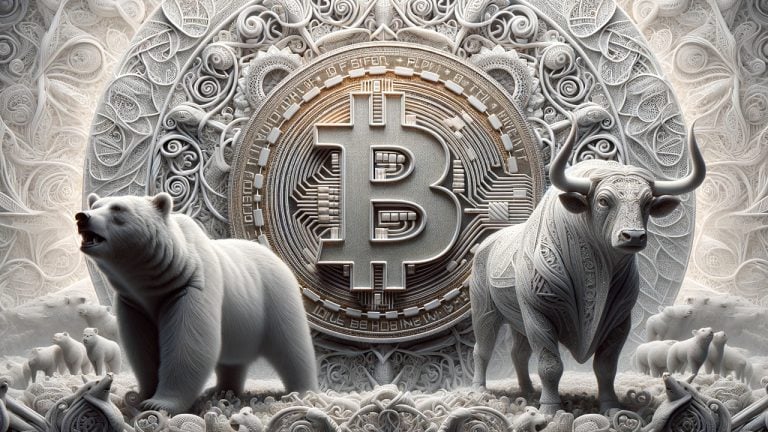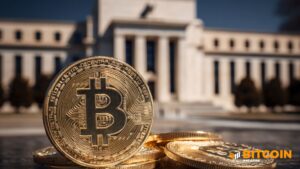
Introduction
On Monday, November 20, 2023, bitcoin (BTC) is navigating slightly above the $37K mark, kicking off the week. Over the last day, BTC's price has fluctuated from $36,441 to $37,516 per unit. Currently, bitcoin trades are generating a global trading volume of $15.55 billion.
Bitcoin's Technical Indicators
In the midst of a fluctuating cryptocurrency landscape, bitcoin’s latest price trends suggest optimistic outlooks, backed by key technical signals. Indicators like the relative strength index (RSI), stochastic, and commodity channel index (CCI) offer a multifaceted perspective of the market, coupled with important moving average statistics.
Relative Strength Index (RSI)
As we stand on November 20, 2023, bitcoin’s RSI is at 63, portraying a balanced market condition. This figure implies that BTC is not in a state of being excessively bought or sold, but it holds the potential for either an increase or decrease in the near future. Market participants should keep a close eye on RSI shifts, as a surge above 70 may point to overbuying, whereas a fall below 30 could signify oversold conditions.
Stochastic Oscillator
The Stochastic oscillator, resting at 74, mirrors a similar neutral market view. Approaching the higher end of its scale, it hints at a potential overbought state of the BTC market but remains within a margin for possible price escalation. However, caution is needed, as a consistent reading above 80 in the Stochastic could signal a forthcoming reversal, particularly if the market perceives BTC as overpriced or if the market becomes too hot.
Commodity Channel Index (CCI)
Regarding the commodity channel index (CCI) at 88, the market is nearing the overbought zone but hasn’t crossed that line yet. A CCI exceeding +100 usually indicates an overbought situation, while a number below -100 denotes an oversold state. Today’s exponential and simple moving averages (EMAs and SMAs) across different timeframes are all pointing towards a strong bullish trend in the market.
Moving Averages
Both the 10-day EMA and SMA, positioned at $36,715 and $36,814 respectively, signal bullish tendencies in the short run. The more extended averages, like the 200-day EMA and SMA at $29,293 and $29,006, solidify the current upward trajectory's robustness, as they sit noticeably below today's price. At present, the short-term trend seems irregular with some bullish leanings, indicating a moderate confidence level as such uneven trading actions could escalate short-term market volatility.
Bullish Outlook
The technical analysis for Bitcoin as of November 20, 2023, reveals some bullish sentiment. The key indicators, including a neutral but leaning-towards-bullish RSI, a Stochastic value hinting at potential growth, and a CCI approaching overbought territory, all suggest a market gearing toward an upward trajectory.
Bearish Outlook
Despite the current bullish indicators, a cautious bearish perspective emerges for Bitcoin's future as of November 20, 2023. The proximity of RSI and Stochastic values to overbought thresholds could signal an impending market saturation, potentially leading to a reversal. The CCI nearing the overbought zone further underscores this caution.
Register your email here to get weekly price analysis updates sent to your inbox.
What do you think about bitcoin's market action on Monday morning? Share your thoughts and opinions about this subject in the comments section below.
Frequently Asked Questions
How much are gold IRA fees?
Six dollars per month is the fee for an Individual Retirement Account (IRA). This includes the account maintenance fees and any investment costs associated with your chosen investments.
You may have to pay additional fees if you want to diversify your portfolio. These fees can vary depending on which type of IRA account you choose. Some companies offer checking accounts for free, while others charge monthly fees for IRA account.
In addition, most providers charge annual management fees. These fees range from 0% to 1%. The average rate is.25% each year. These rates can be waived if the broker is TD Ameritrade.
Should you open a Precious Metal IRA
Precious metals are not insured. This is the most important fact to know before you open an IRA account. If you lose money in your investment, nothing can be done to recover it. All your investments can be lost due to theft, fire or flood.
It is best to invest in physical gold coins and silver coins to avoid this type loss. These items have been around for thousands of years and represent real value that cannot be lost. If you were to offer them for sale today, they would likely fetch you more than you paid when you bought them.
Consider a reputable business that offers low rates and good products when opening an IRA. It's also wise to consider using a third-party custodian who will keep your assets safe while giving you access to them anytime.
Remember that you will not see any returns unless you are retired if you open an Account. Do not forget about the future!
What Should Your IRA Include in Precious Metals?
You should remember that precious metals are not only for the wealthy. It doesn't matter how rich you are to invest in precious metals. There are many ways that you can make money with gold and silver investments, even if you don't have much money.
You might think about buying physical coins such a bullion bar or round. Shares in precious metals-producing companies could be an option. Another option is to make use of the IRA rollover programs offered by your retirement plan provider.
You can still get benefits from precious metals regardless of what choice you make. Although they aren’t stocks, they offer the possibility for long-term gains.
And unlike traditional investments, they tend to increase in value over time. This means that if you decide on selling your investment later, you'll likely get more profit than you would with traditional investing.
Who is entitled to the gold in a IRA that holds gold?
The IRS considers gold owned by an individual to be “a type of money” and is subject taxation.
You must have at least $10,000 in gold and keep it for at most five years to qualify for this tax-free status.
Although gold can help to prevent inflation and price volatility, it's not sensible to have it if it's not going to be used.
If you are planning to sell your gold someday, it is necessary that you report its value. This can affect the capital gains taxes that you owe when cashing in on investments.
A financial planner or accountant should be consulted to discuss your options.
How to Open a Precious Metal IRA
The first step in opening an Individual Retirement Account, (IRA), is to decide if it's something you want. Open the account by filling out Form 8606. You will then need to complete Form 5204 in order to determine which type IRA you are eligible. This form should be filled within 60 calendar days of opening the account. You can then start investing once you have this completed. You can also contribute directly to your paycheck via payroll deduction.
To get a Roth IRA, complete Form 8903. Otherwise, the process will be identical to an ordinary IRA.
To be eligible for a precious metals IRA, you will need to meet certain requirements. The IRS says you must be 18 years old and have earned income. You can't earn more than $110,000 per annum ($220,000 in married filing jointly) for any given tax year. Additionally, you must make regular contributions. These rules apply to contributions made directly or through employer sponsorship.
You can use a precious-metals IRA to purchase gold, silver and palladium. But, you'll only be able to purchase physical bullion. This means you won't be allowed to trade shares of stock or bonds.
To invest directly in precious metals companies, you can also use precious metals IRA. This option may be offered by some IRA providers.
However, investing in precious metals via an IRA has two serious drawbacks. First, they are not as liquid or as easy to sell as stocks and bonds. It is therefore harder to sell them when required. Second, they don't generate dividends like stocks and bonds. Also, they don't generate dividends like stocks and bonds. You will eventually lose money rather than make it.
Can the government seize your gold?
The government cannot take your gold because you own it. It's yours, and you earned it by working hard. It is yours. There may be exceptions to this rule. If you are convicted of fraud against the federal government, your gold can be forfeit. If you owe taxes, your precious metals could be taken away. However, if you do not pay your taxes, you can still keep your gold even though it is considered property of the United States Government.
Statistics
- If you take distributions before hitting 59.5, you'll owe a 10% penalty on the amount withdrawn. (lendedu.com)
- If you accidentally make an improper transaction, the IRS will disallow it and count it as a withdrawal, so you would owe income tax on the item's value and, if you are younger than 59 ½, an additional 10% early withdrawal penalty. (forbes.com)
- Gold is considered a collectible, and profits from a sale are taxed at a maximum rate of 28 percent. (aarp.org)
- This is a 15% margin that has shown no stable direction of growth but fluctuates seemingly at random. (smartasset.com)
- (Basically, if your GDP grows by 2%, you need miners to dig 2% more gold out of the ground every year to keep prices steady.) (smartasset.com)
External Links
investopedia.com
finance.yahoo.com
bbb.org
cftc.gov
How To
The History of Gold as an Asset
From the ancient days to the early 20th Century, gold was a common currency. It was universally accepted and loved for its beauty, durability, purity and divisibility. In addition, because of its value, it was traded internationally. Different weights and measurements existed around the world, however, because there were not international standards to measure gold. For example, one pound sterling in England equals 24 carats; one livre tournois equals 25 carats; one mark equals 28 carats; and so on.
In the 1860s, the United States began issuing American coins made up of 90% copper, 10% zinc, and 0.942 fine gold. This caused a drop in foreign currency demand which resulted in an increase of their prices. The United States began minting large quantities gold coins at this time, which led to a drop in the price. The U.S. government needed to find a solution to their debt because there was too much money in circulation. To do so, they decided to sell some of the excess gold back to Europe.
Because most European countries did not trust the U.S. dollar, they started accepting gold as payment. However, many European nations stopped using gold to pay after World War I and started using paper currency instead. The price of gold rose significantly over the years. Even though gold's price fluctuates, it is still one of the most secure investments you could make.
—————————————————————————————————————————————————————————————–
By: Jamie Redman
Title: Bitcoin Price Analysis: Bullish and Bearish Signals Point to Market Outlook
Sourced From: news.bitcoin.com/bitcoin-technical-analysis-btc-holds-above-37k-with-tense-market-equilibrium/
Published Date: Mon, 20 Nov 2023 13:00:08 +0000
Did you miss our previous article…
https://altcoinirareview.com/ftt-the-surging-exchange-token-defying-the-odds/
Related posts:
 Bitcoin Technical Analysis: Traders Await US Inflation Data as Bitcoin Consolidates in Tight Range
Bitcoin Technical Analysis: Traders Await US Inflation Data as Bitcoin Consolidates in Tight Range
 Bitcoin, Ethereum Technical Analysis: Bullish Trends and Overbought Signals in BTC and ETH
Bitcoin, Ethereum Technical Analysis: Bullish Trends and Overbought Signals in BTC and ETH
 7 Best Gold IRA Companies 2023 (Ranked by customer reviews)
7 Best Gold IRA Companies 2023 (Ranked by customer reviews)
 Bitcoin, Ethereum Technical Analysis: Navigating Choppy Price Action
Bitcoin, Ethereum Technical Analysis: Navigating Choppy Price Action












